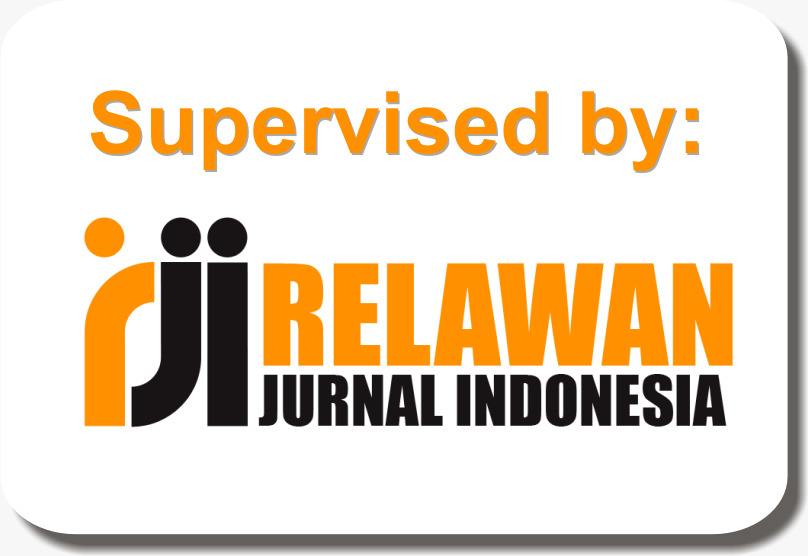PENGEMBANGAN MODUL BERBASIS MASALAH BERBANTUAN SOFTWARE GEOGEBRA UNTUK MENINGKATKAN PEMAHAMAN KONSEP DAN HASIL BELAJAR GEOMETRI TRANSFORMASI
Abstract
Keywords
Full Text:
PDFArticle Metrics :
References
F. J. Cantú-Ortiz, N. Galeano Sánchez, L. Garrido, H. Terashima-Marin, and R. F. Brena, “An artificial intelligence educational strategy for the digital transformation,” Int. J. Interact. Des. Manuf., vol. 14, no. 4, pp. 1195–1209, 2020, doi: 10.1007/s12008-020-00702-8.
B. Mayer, A. Blume, C. Black, and S. Stevens, “Improving Student Learning Outcomes through Community-based Research: The Poverty Workshop,” Teach. Sociol., vol. 47, no. 2, pp. 135–147, 2019, doi: 10.1177/0092055X18818251.
N. P. W. P. Dewi and G. N. S. Agustika, “Efektivitas Pembelajaran Matematika Melalui Pendekatan Pmri Terhadap Kompetensi Pengetahuan Matematika,” J. Penelit. dan Pengemb. Pendidik., vol. 4, no. 2, p. 204, 2020, doi: 10.23887/jppp.v4i2.26781.
M. A. Tashtoush, Y. Wardat, F. Aloufi, and O. Taani, “The effect of a training program based on TIMSS to developing the levels of habits of mind and mathematical reasoning skills among pre-service mathematics teachers,” Eurasia J. Math. Sci. Technol. Educ., vol. 18, no. 11, 2022, doi: 10.29333/EJMSTE/12557.
R. Arifa, B. H. Febria, and M. A. Rofiqi, “Upaya Guru Kelas dalam Mengatasi Kesulitan Belajar Matematika ( Diskalkulia ) pada Siswa Kelas V SDN Gunggung 1,” vol. 1, no. 1, pp. 29–44, 2025.
A. Nur and A. Ronggo, “Transformasi Digital dalam Pendidikan Matematika untuk Literasi Abad 21 : Pendekatan STEM dan Keterampilan 6C,” no. December, 2024.
R. Fatmawati and Yahfizham, “Systematic Literature Review: Pemanfaatan Aplikasi Geogebra pada Materi Transformasi Geometri,” IJMSE Int. J. Math. Sci. Educ., vol. 1, no. 2, pp. 1–11, 2024.
J. R. Star, J. A. Chen, M. W. Taylor, K. Durkin, C. Dede, and T. Chao, “Studying technology-based strategies for enhancing motivation in mathematics,” Int. J. STEM Educ., vol. 1, no. 1, pp. 1–19, 2014, doi: 10.1186/2196-7822-1-7.
D. F. Diva et al., “Pentingnya Pemahaman Konsep Geogebra dalam Pembelajaran Matematika,” J. Educ., vol. 5, no. 3, pp. 8441–8446, 2023, doi: 10.31004/joe.v5i3.1629.
M. Sistem, P. Linear, and D. U. A. Variabel, “Pengembangan modul matematika berbasis masalah pada materi sistem persamaan linear dua variabel,” vol. 6, no. 1, pp. 57–63, 2019.
A. Rustandi, “Penerapan Model ADDIE dalam Pengembangan Media Pembelajaran di SMPN 22 Kota Samarinda,” vol. 11, no. 2, pp. 57–60, 2021.
B. Taupik, Y. Ruhiat, and I. Rusdiyani, “Pengembangan E-LKPD Interaktif Berbasis Live Worksheet pada Materi Volume Bangun Ruang,” vol. 9, no. 1, pp. 30–42, 2024.
H. T. Mcginness et al., “An educational intervention to increase student engagement in feedback,” Med. Teach., vol. 0, no. 0, pp. 1–9, 2020, doi: 10.1080/0142159X.2020.1804055.
B. C. E. Oguguo, F. A. Nannim, and J. J. Agah, “Effect of learning management system on Student ’ s performance in educational measurement and evaluation,” 2020.
S. Mclean, S. M. Attardi, L. Faden, and M. Goldszmidt, “Flipped classrooms and student learning : not just surface gains,” pp. 47–55, 2016, doi: 10.1152/advan.00098.2015.
A. I. Journal et al., “Designing a National Longitudinal Faculty Development Curriculum Focused on Educational Scholarship : Process , Outcomes , and Lessons Learned,” Teach. Learn. Med., vol. 29, no. 3, pp. 337–350, 2017, doi: 10.1080/10401334.2017.1282370.




